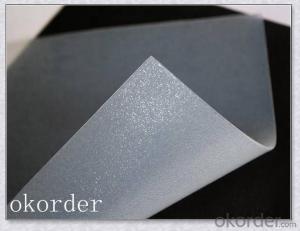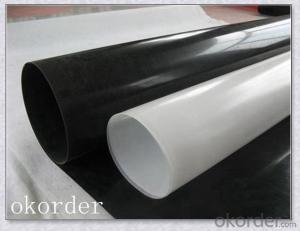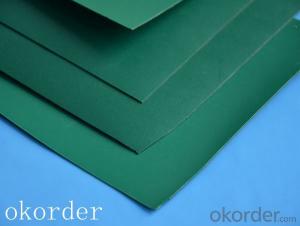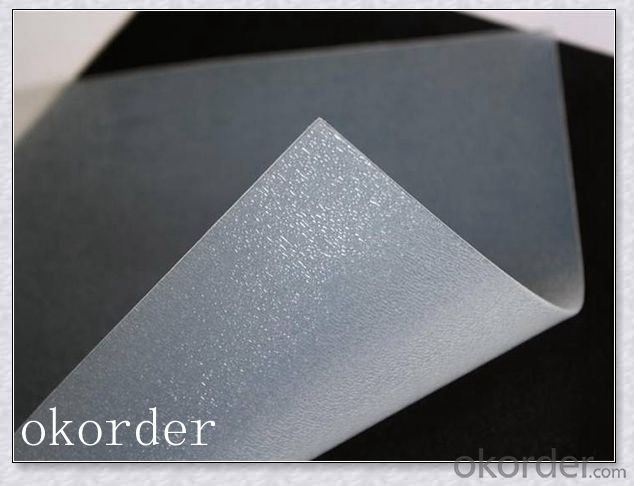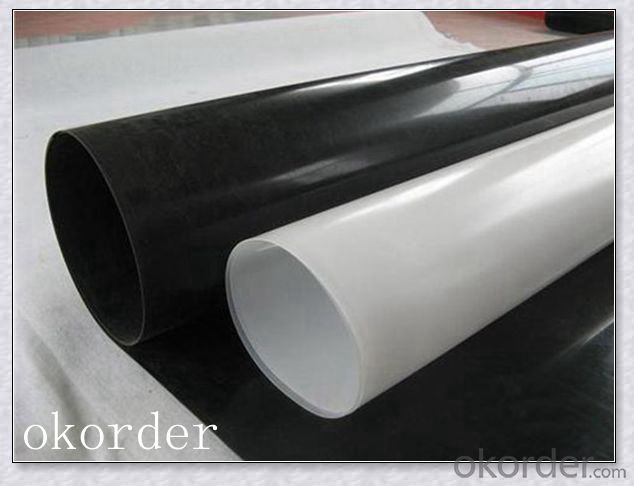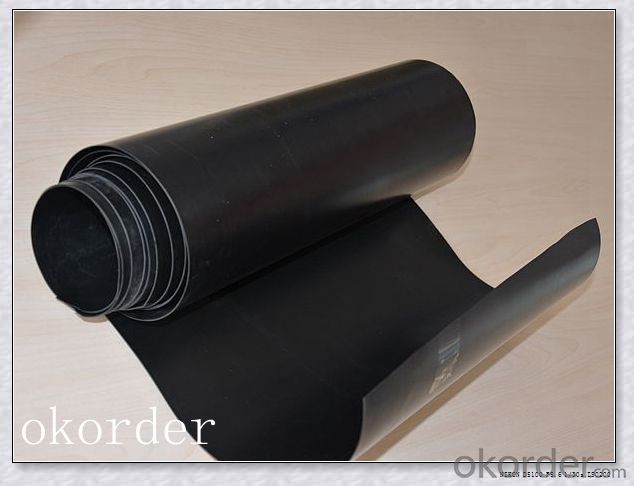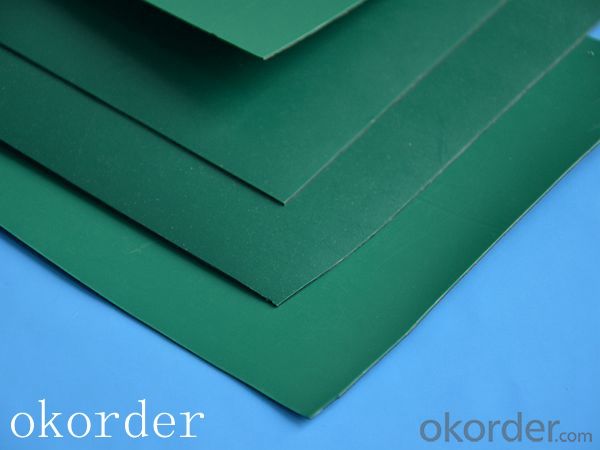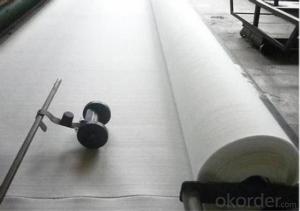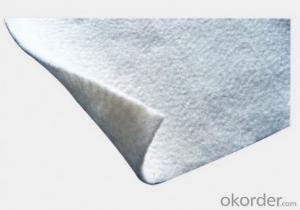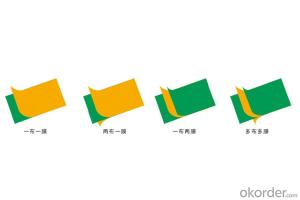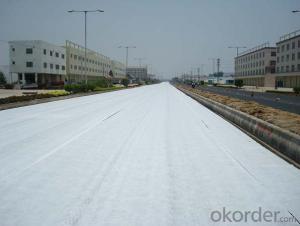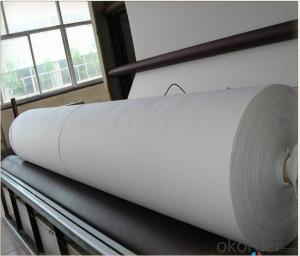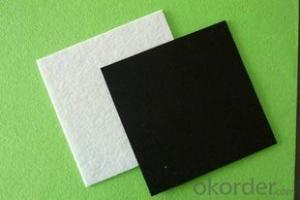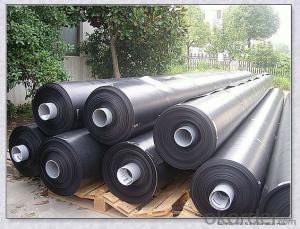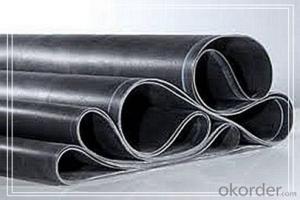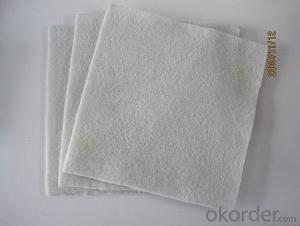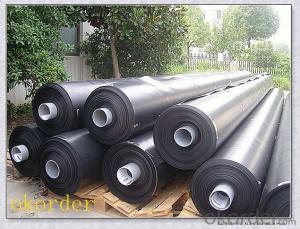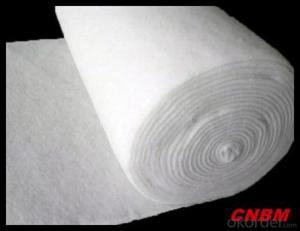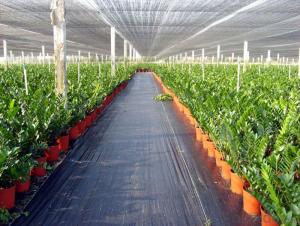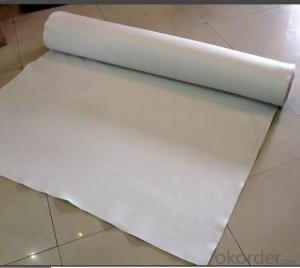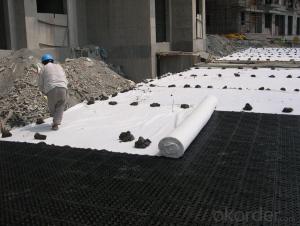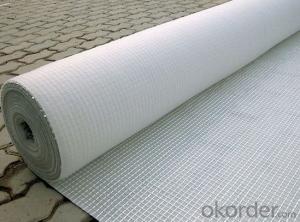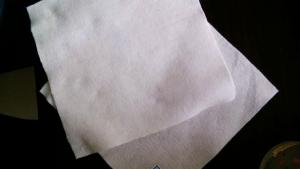Geotextile Non Woven Fabric 4 Oz Waterproof Smooth Membrane Manufacturer CNBM
- Loading Port:
- China main port
- Payment Terms:
- TT OR LC
- Min Order Qty:
- 1000 m²
- Supply Capability:
- 1000000 m²/month
OKorder Service Pledge
OKorder Financial Service
You Might Also Like
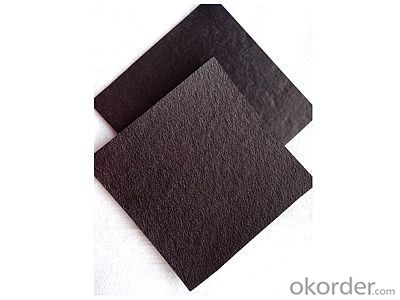
Product Introduction
Geomembrane with impermeable plastic film as a substrate, and non-woven geotextile composite made of impermeable material, which depends on the seepage properties of a impermeable plastic film performance. Is a kind of polymer chemistry flexible material, the proportion of small, extensible stronger ability to adapt to high deformation. Corrosion resistance, low temperature, frost good performance. Have better resistance to erosion, are not afraid of acid, alkali and salt erosion.
Properties :
It is of excellent physical and hydraulic properties, and especially its advantanges in the tensile strength,longitudinal and lateral strength ratio,uniformity and so on.
Supply a wide range of color,such as white,green and grey.Independent developed soft green fiber can protect installer's eyes at the onsite during work under the strong light,and it is eco-friendly productions.
Applicable to river dams, tunnels, drainage bank seepage, metallurgy and chemical industry pollution prevention, construction, transportation, environmental protection works.
Our Service
1.On a regular basis or as per your request,we entrust national testing agencies to conduct quality inspections
2. Strictly in accordance with the ISO9001-2008 international quality system standard,we monitor and manage the whole process throughout production,quality testing,and measurement to ensure product quality
3. For quality-related construction delay or substandard construction(except for damage or losses due to customer’s responsibility or irresistible natural disasters),we have refunding,replacement,and repair services.We will respond to customers’ feedbacks on quality issues within 24 hours.
FAQ:
Q: What kind of payments does jenor support?
A: T/T, L/C, Cash are accepted.
Q: Do you charge for the samples?
A: Accordeing to our company policy, the samples are free, we only charge the freight fee. And we will return the freight fee during the next order.
Q: Can you produce according to customers' design?
A: Sure, we are professional manufacturer, OEM and ODM are both welcome.
Q: Do you have other products?
A: Yes, please check the pictures:
- Q: A creek next to our property is eating away the embankment and an engineer suggested using the sand in the creek bed.. wrapping it up in geotextile fabric in the form of a burrito but he did mnot mention how to fasten them shut..any ideas or experience with erosion control out there?
- Get some tie wire or baling wire. It's a soft wire used for tying reinforcing steel together or for baling straw. You could also use plastic cable ties.
- Q: What are the key differences between woven and nonwoven geotextiles?
- Woven geotextiles are made by weaving individual threads together to create a strong and durable fabric, while nonwoven geotextiles are made by bonding fibers together using heat, chemicals, or mechanical processes. Woven geotextiles have high tensile strength and are commonly used for soil stabilization, erosion control, and separation of different soil layers. On the other hand, nonwoven geotextiles have excellent filtration and drainage properties, making them suitable for applications such as filtration, separation, and protection. Overall, the key differences between woven and nonwoven geotextiles lie in their manufacturing process, physical properties, and intended usage.
- Q: How do geotextiles affect plant growth?
- Geotextiles can positively impact plant growth by providing a stable environment for roots, preventing soil erosion, and promoting moisture retention. Additionally, they control weed growth, regulate soil temperatures, and enhance nutrient availability, ultimately leading to healthier and more productive plants.
- Q: What are the considerations for geotextile selection in railroad projects?
- When selecting geotextiles for railroad projects, several considerations need to be taken into account. Firstly, the geotextile should have sufficient strength to withstand the loads and stresses imposed by train traffic. It should also possess excellent puncture resistance to ensure long-term durability. Additionally, the geotextile should have good filtration properties to prevent fine particles from entering the subgrade and causing drainage issues. It is important to consider the geotextile's permeability, as it should allow for adequate drainage to maintain the stability of the railway track. Lastly, the geotextile's compatibility with other materials used in the project, such as ballast or subgrade soils, should be evaluated to ensure proper functioning of the system.
- Q: Artificial lake geotextile practices
- Library and slope with a composite geomembrane all laying, I specialize in the production and construction of geotextile materials
- Q: Geotextile how to construction?
- There are specialized construction teams
- Q: What are the potential drawbacks of using geotextiles?
- Some potential drawbacks of using geotextiles include the high cost of materials and installation, limited durability in certain environments, potential for clogging due to fine particles, and difficulty in recycling or disposing of used geotextiles. Additionally, improper installation or selection of geotextiles may not provide the desired results, leading to project failure or inefficiency.
- Q: What are the advantages of using geotextiles in mining operations?
- There are several advantages of using geotextiles in mining operations. Firstly, geotextiles act as a barrier, preventing the erosion of soil and rock particles, thereby reducing the potential for soil contamination and water pollution. Secondly, geotextiles can strengthen and stabilize the ground, providing increased support for heavy machinery and equipment used in mining operations. Additionally, geotextiles can be used to separate different layers of soil and rock, allowing for efficient drainage and filtration of water, which is crucial for maintaining the integrity of mining sites. Overall, the use of geotextiles in mining operations enhances environmental protection, improves operational efficiency, and ensures the safety of workers and surrounding ecosystems.
- Q: How do geotextiles help in filtration of stormwater?
- Geotextiles help in the filtration of stormwater by acting as a barrier that allows water to pass through while trapping sediment, debris, and pollutants. They prevent these contaminants from entering the drainage system, improving water quality and reducing the risk of clogging in stormwater infrastructure. Additionally, geotextiles promote infiltration, allowing stormwater to percolate into the underlying soil, thus replenishing groundwater levels and reducing the chances of flooding.
- Q: What are the applications of geotextiles in road construction?
- Geotextiles have numerous applications in road construction, primarily in the areas of soil stabilization, drainage, and erosion control. They are used as a separation layer between the subgrade and the base course to prevent the mixing of different soil layers, thereby enhancing the stability and longevity of the road. Geotextiles also aid in improving the drainage system by allowing water to flow through the fabric while preventing soil particles from clogging the drainage system. Furthermore, they are employed to control erosion by preventing soil erosion from embankments and slopes, thereby maintaining the integrity of the road structure. Overall, geotextiles play a crucial role in enhancing the performance and durability of roads.
Send your message to us
Geotextile Non Woven Fabric 4 Oz Waterproof Smooth Membrane Manufacturer CNBM
- Loading Port:
- China main port
- Payment Terms:
- TT OR LC
- Min Order Qty:
- 1000 m²
- Supply Capability:
- 1000000 m²/month
OKorder Service Pledge
OKorder Financial Service
Similar products
Hot products
Hot Searches
Related keywords
